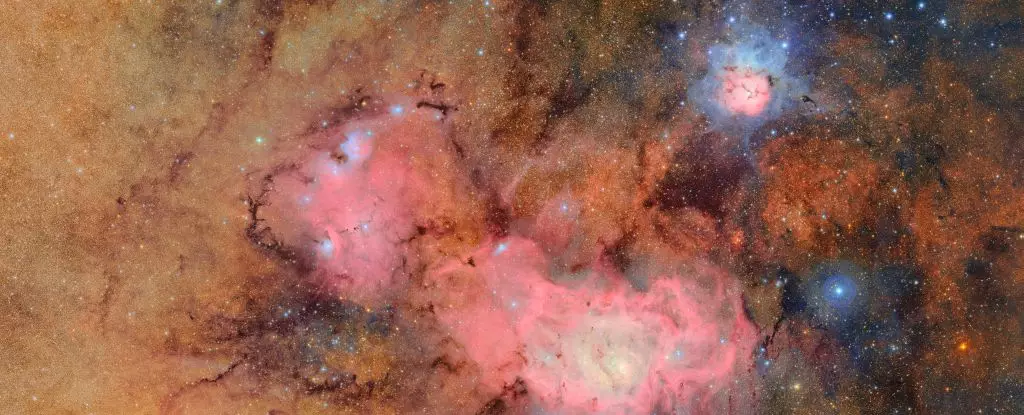The unveiling of the first images from the Vera C. Rubin Observatory marks a pivotal moment in modern astronomy, propelling us into an era rich with discovery and understanding of the cosmos. The observatory’s ambitious Legacy Survey of Space and Time (LSST) is set to revolutionize our exploration of the southern sky, employing a revolutionary 3,200-megapixel camera to observe a staggering landscape of millions of galaxies and an abundant assortment of asteroids in just a few hours of observation. This represents not merely an advancement in technology, but a quantum leap in our capability to comprehend the universe.
Stellar Beginnings: The Trifid and Lagoon Nebulas
The initial release showcases stunning images of the Trifid and Lagoon nebulas, which serve as astronomical nurseries where stars are birthed millions of light-years away from our Solar System. These vibrant regions are not just visually captivating; they are crucibles of cosmic evolution and play an essential role in understanding the life cycle of stars. The Rubin Observatory’s composite image, constructed from 678 individual observations over seven hours, exemplifies the intricate beauty of these nebulas while providing vital data on stellar formation. The visual allure of their immense clouds of dust and gas evokes a sense of wonder and curiosity about our galactic neighbors.
Redefining the Cosmic Data Landscape
What sets the Rubin Observatory apart is its proficiency to capture vast areas of the sky repeatedly—approximately 800 times per section throughout the survey period. By frequently cataloging cosmic phenomena in various spectrums, including near-ultraviolet, optical, and near-infrared wavelengths, the LSST promises to compile a temporal tapestry that reveals not only what exists but how our universe evolves over time. This monumental effort is projected to yield more astronomical data than all optical telescopes in history combined, reshaping our understanding of celestial dynamics.
The Anticipation of Tomorrow’s Discoveries
While the captured imagery is awe-inspiring, it merely hints at the depths of knowledge that lie ahead. The official reveal planned for June 23, 2025, is set to ignite a flurry of excitement across the scientific community and beyond. The U.S. National Science Foundation and Department of Energy’s collaboration emphasizes the significance of this undertaking, reaffirming the belief that with advanced tools come unprecedented opportunities for exploration. As Brian Stone, acting director of the NSF, articulately predicted, this observatory is poised to not only expand our cosmic library but will also challenge existing theories, invite new inquiries, and inspire the next generation of astronomers.
A New Era Awaits
The advancements at the Vera C. Rubin Observatory signify more than just the accumulation of data; they encapsulate the profound human endeavor to understand our place in the cosmos. As we stand on the brink of this new era, one cannot help but feel a sense of excitement about the revelations and mysteries the universe still holds. The images captured are not just mere pictures; they are windows into the past, present, and future of our ever-expanding universe, ultimately transforming the way we perceive space and time itself.

